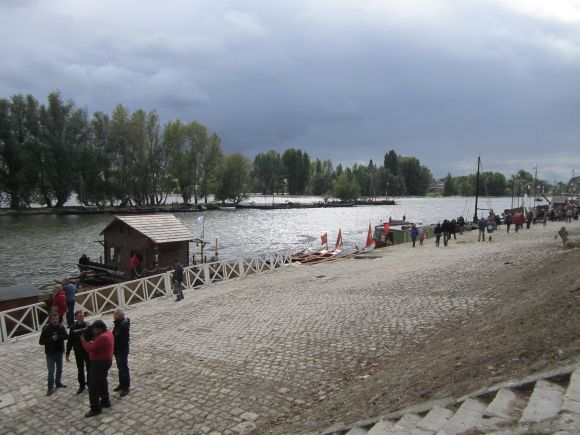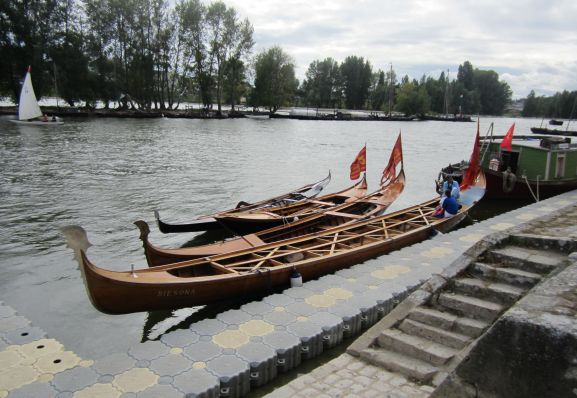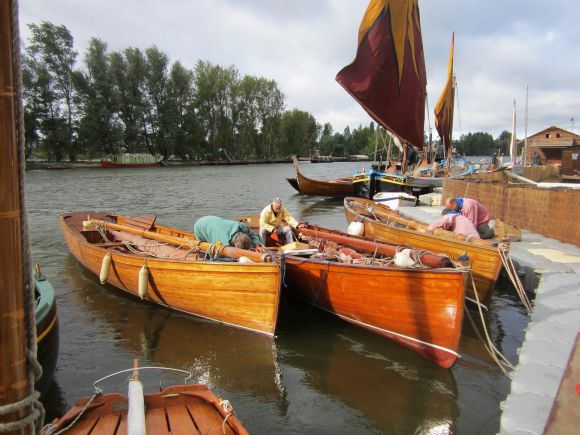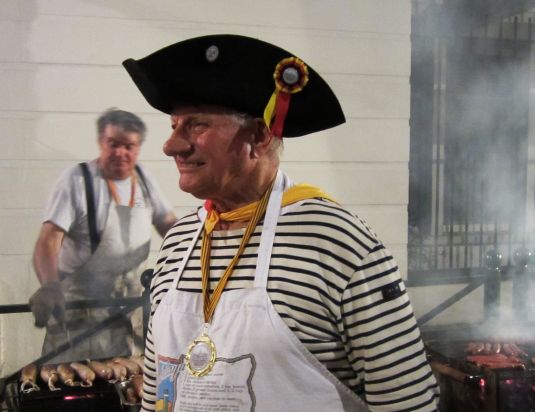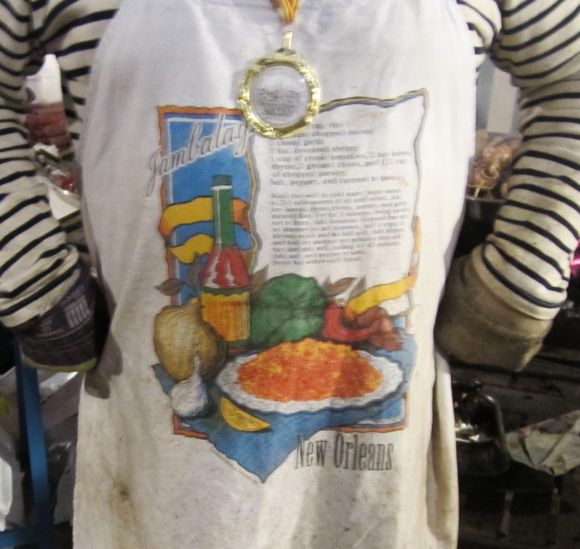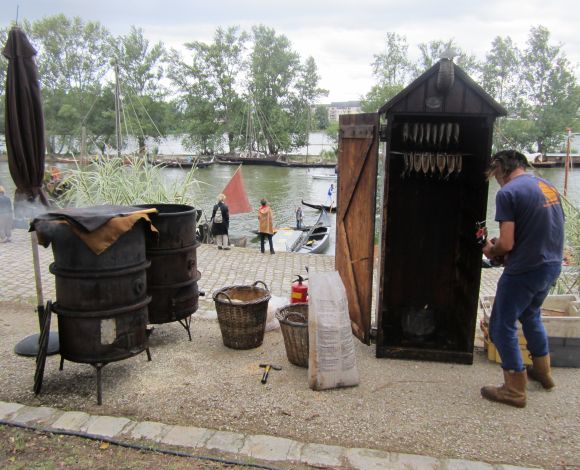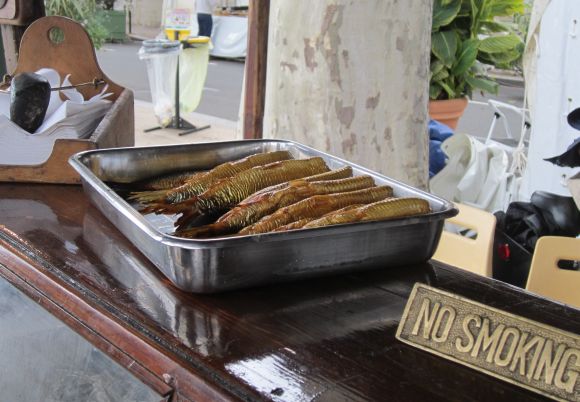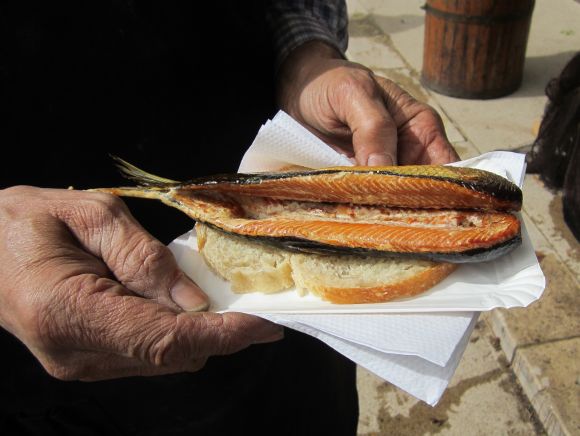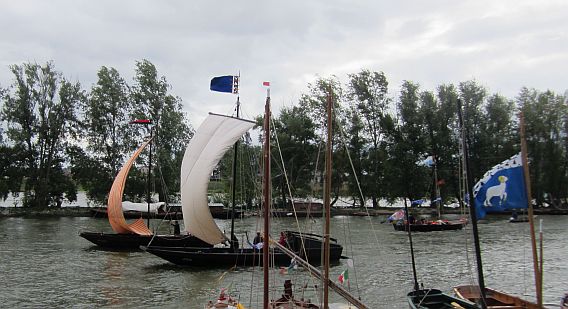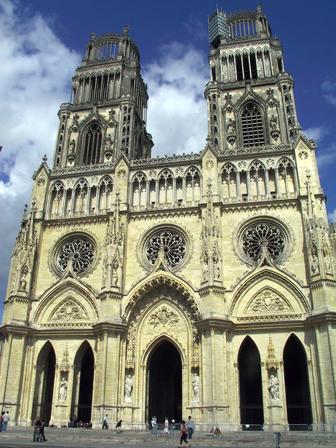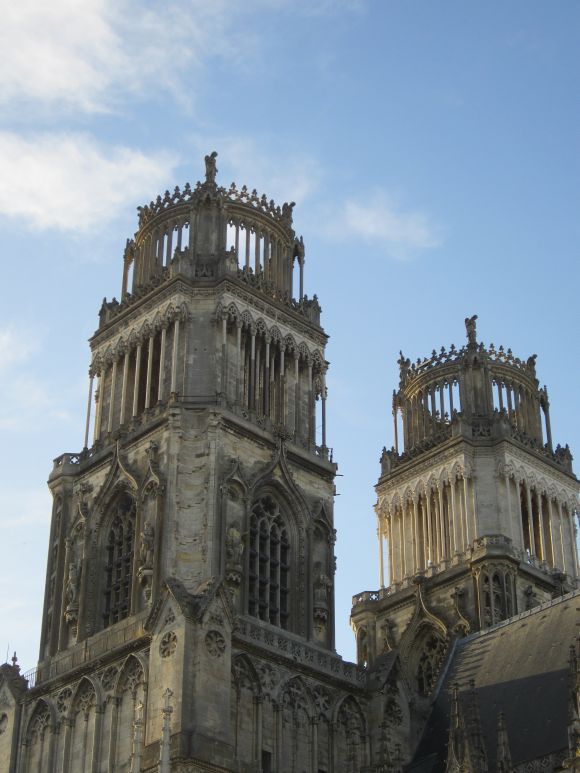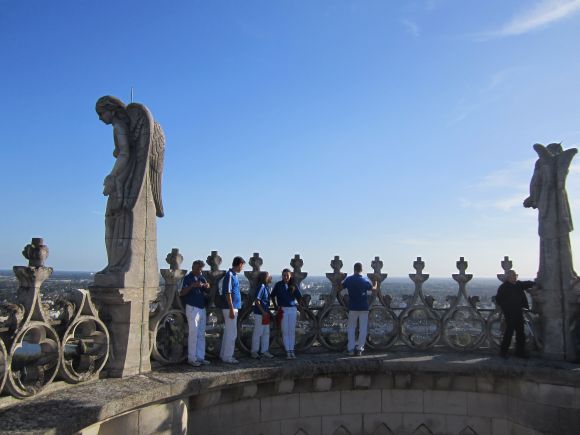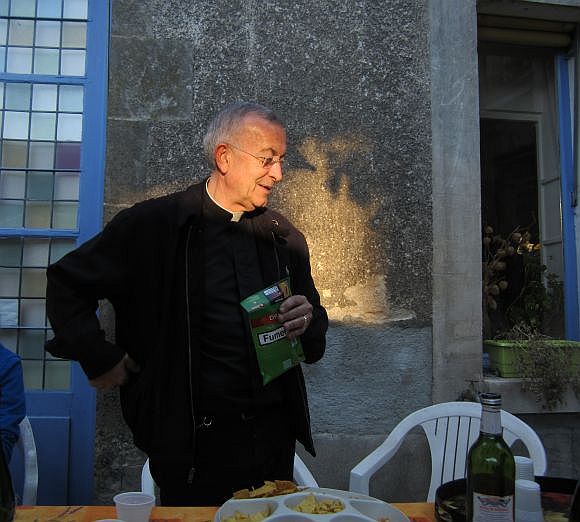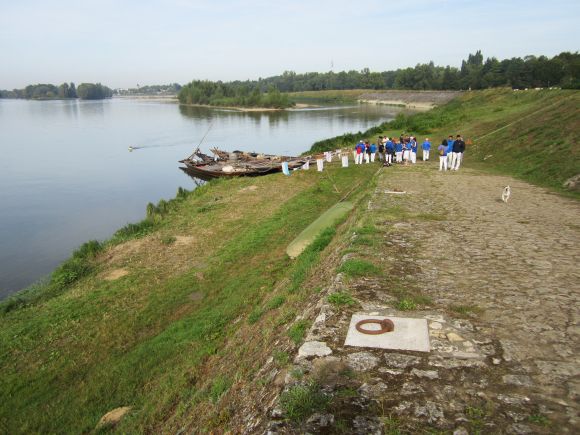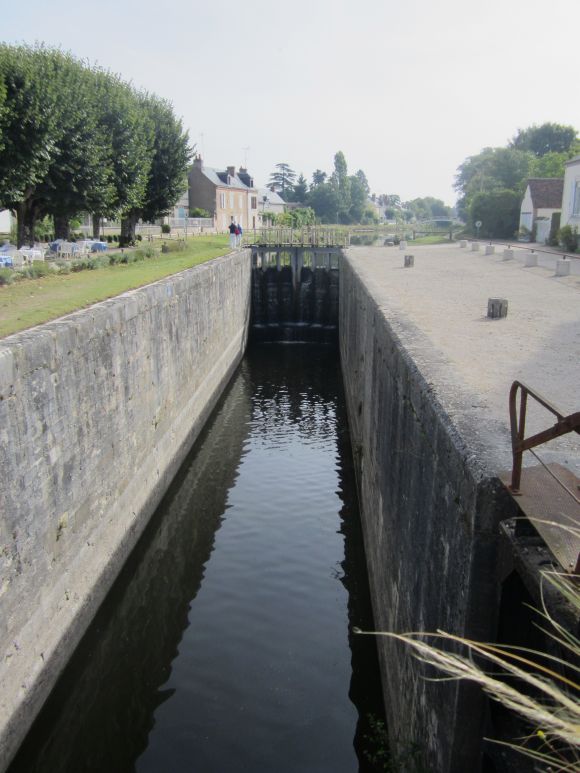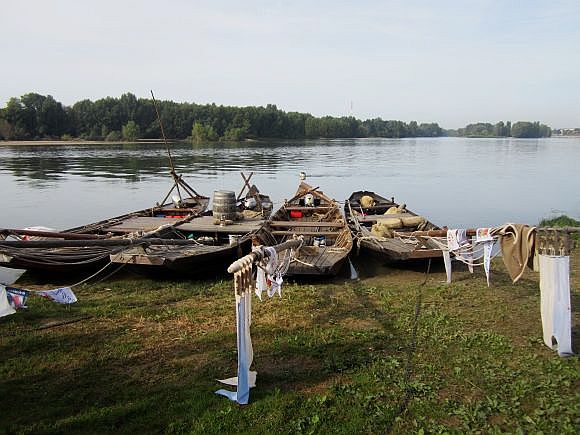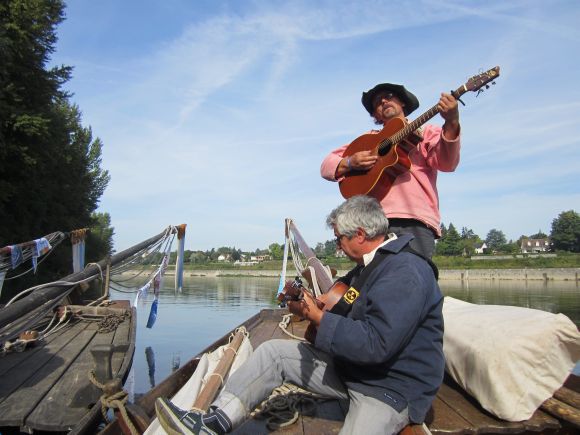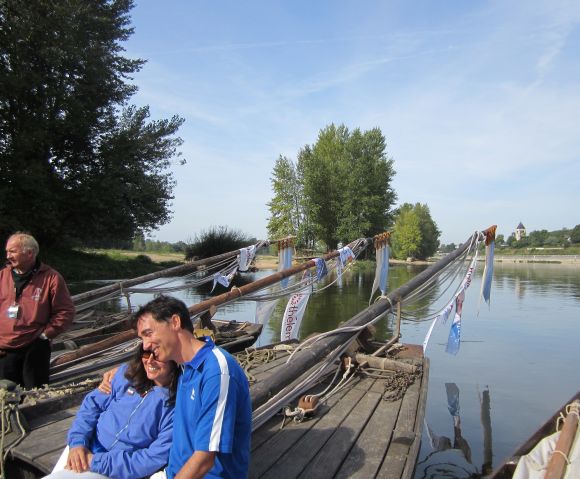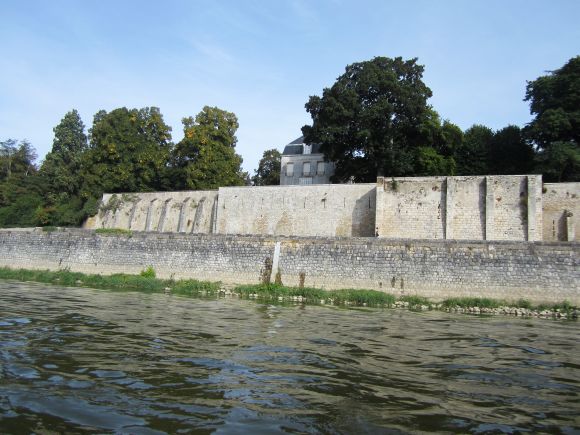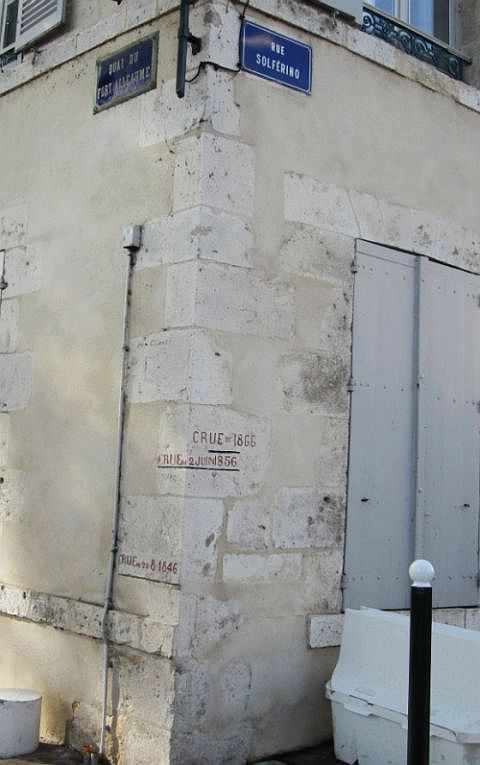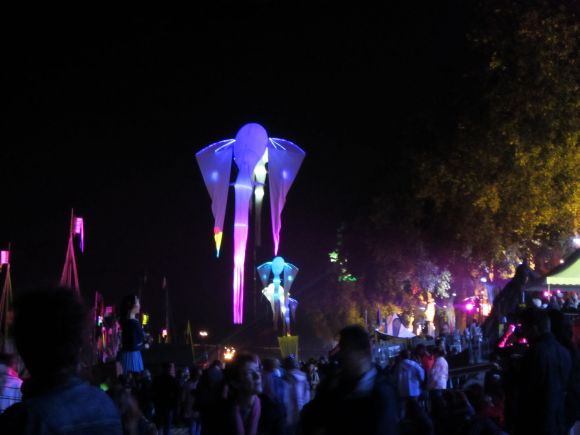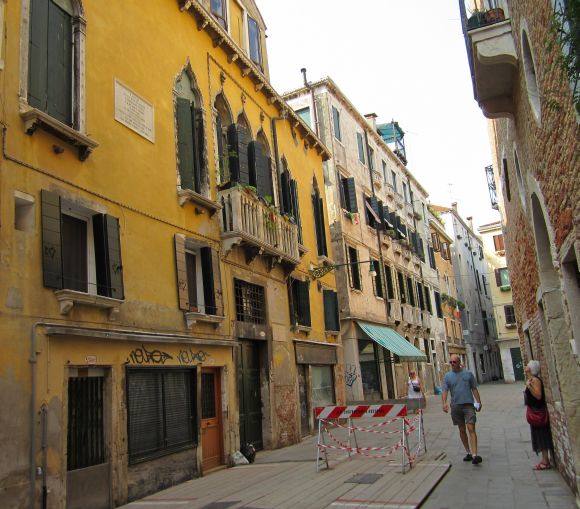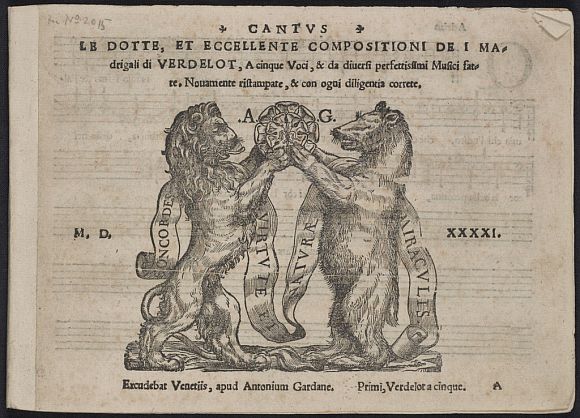
Every so often a kind of solar flare flashes out in Venetian life, an outbursting of emotion that seems to come from nowhere but whose glare illuminates all sorts of things.
The latest and, to me, most meaningful of these occasional events began to build a few years ago, when I began to notice a creeping, sinister transformation of the street names from the Venetian language into Italian. Nothing against the language of the divine Dante, but Venetian can also make a very good claim to antiquity, as well as usage by a number of not inconsiderable men of letters, primarily playwright Carlo Goldoni.
And not only were these alterations clumsy, brainless, and unnecessary, but the process often stopped somewhere between the two tongues, thereby creating a misshapen, bastard non-language. (One wit called it “Italioid.”) The street names were being commandeered by linguistic pod-people.
The walls of Venice began slowly to show far too many of these inexplicable little monsters, and what I couldn’t grasp was why it was happening. Wasn’t Venetian good enough anymore? And what did the perpetrators think was so important about changing the names? And if they were going to change the names, why couldn’t they do it in some intelligent way? Had the city hired some itinerant Finnish sign-painter who also pulled teeth and delivered babies?
Many Venetians, I gather, had also been watching this gradual transmutation with foreboding. In fact, as far back as 2009 people were sending complaints and appeals to the city to correct or repair the signs, to little or no avail, and there was even a Facebook group of like-minded sheet-watchers. But they labored in silence.
In November the boding was fulfilled. Because it was announced the the street names were going to be rewritten in Italian. And why? I am still trying to find the answer to that, but in the meantime, only one justification was offered, a comment by the estimable Harry Cipriani, no less. He said that Italian street names would be easier for the tourists to understand. (As for me, I totally do not understand this concept. Why do they need to understand them? I go to Istanbul and I read a street sign: “Istiklal Caddesi.” Do I need to know what that means? The street is called “Istiklal Caddesi.” If I cared, I could find out for myself that it means “Independence Street.”) One reader retorted that if that were the case, why didn’t the city just write them all in English?
Yes, there is a Venetian language, and I will not let myself go wandering down philological trails to explain its provenance or hymn its expressive beauty. Suffice it here to say that it is (A) really old and (B) still used daily by most Venetians of whatever social rank and (C) laden, soaked, with cultural history, memory, and significance. Like some other dialects, it bears some resemblance to Italian, but one of its primary characteristics is that where Italian tends to double consonants, Venetian keeps them single. Example: “Battello” (“boat” in Italian) is”batelo” in Venetian.
The large brain behind this project of transmogrification was a certain Tiziana Agostini, whom I never knew existed, much less knew that she was the Assessore (I think of them as sub-mayors) of Place Names. But she had been toiling away, with a number of assistants and collaborators, at a long project of studying, analyzing, assaying, the street names of Venice, and she concluded that they needed some titivating. I suppose she was just doing her job, because after all, what else would an Assessore in charge of Toponymy do all day? But where ecological operators collect garbage, and carabinieri arrest thieves and murderers, it wasn’t clear what urgent need she was answering.
Hence the solar flare of Venetian pride, whose flames leapt up and toasted her a dark golden brown on both sides.
Venice’s 4,000-some street names are painted on walls in black letters within white rectangles. These white rectangles are known as “nizioleti” (nee-see-oh-EH-ti); in Venetian, it means “little sheets.” As in bedsheets. I suppose they could have called them handkerchiefs or scarves, but I think whoever thought of sheets showed the playful side to the Venetian spirit that doesn’t get much chance to come out anymore, at least not in public.
Day after day uproar filled the pages of the Gazzettino, not to mention those of Facebook, where a special group had been formed in 2011: “Il passato e il presente dei nizioleti.” (the past and present of the nizioleti). The group had already spent three years asking the Comune to clean up, repair and correct the street signs. One of its members, Alberto Alberti, was interviewed by a local television station under the rubric “The soul of Venice abandoned to neglect.” Here is the link: http://www.youtube.com/watch?v=W8QGaczYpw4. Even though he is speaking in Italian (with intervals of Venetian, n.b.), it’s easy to see what things have come to — and this was three years ago. There are even passageways and streets, as he shows at the end, which no longer have any name at all; only the few people who remain remember what it used to be called, and when they’re gone, oh well.
Agostini’s innovation was met with protest, outrage, dudgeon, from just about everybody. Readers wrote in with opinions on the value and reliability of her sources, there was delicate parsing of historical details, there was parry and riposte, but it all came down to “Cease and desist.”
This affair, despite what I’m going to elucidate below, was not primarily about language as language. It was about drawing a line in the sand, it was an expression of the evidently deep and powerful desire to prevent yet another change in Venetian life to accommodate…non-Venetians? The city government? Tourists? Linguists? The divine Dante? It was never made clear what or who was going to be improved by this alteration. Yet alter we must!
People were mad because this brave new system of naming streets was unnecessary, undesirable, and indefensible. Because guess what? Venetians don’t especially care about linguistical arguments concerning phonology, morphemes, lexis, pictorial semiotics. mechanical graphetics, or anything else that keeps people busy in their offices fooling around with words which were doing just fine on their own.
What they do care about are fixes to things that aren’t broke, and the virtually certain danger such fixes pose to what remains of their ravaged culture. Or, as Franco Miracco put it in an essay in the Gazzettino, “Running the risk of destroying, canceling, losing the ‘marks’ of history.”
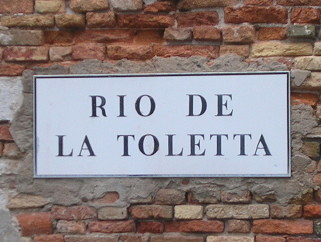
The objections to the changes fell into three categories: Orthographical, Historical and Cultural. Here is an assortment of some of the comments that were printed in the Gazzettino in the course of a week (translated by me). Yes, there are lots of them. I’m giving them here because they show the depth, breadth, height, and cubic weight of the Venetian reaction.
Orthographical: The most-cited source on this is the Cadastre (registry of land/deeds) of 1786. Otherwise, the main sources of immemorial reliability are “Curiosita’ Veneziane” by Giuseppe Tassini (1863) and the “Dizionario del dialetto veneziano” by Giuseppe Boerio (1826). If there could be two “Bibles” on the subject of Venetian, they would be these: Books of phenomenal labor and scholarship whose accuracy it is impossible to question.
Like Italian, Venetian (with some special variations) is written the way it’s spoken. And, as mentioned above, Venetians don’t linger on double consonants but slide right across them with the help of only one.
So of the myriad examples of how the Venetian language should (the public) or could (Agostini) be spelled, attention was fixed on the term “rio tera‘.” (REE-oh teh-RAH.” It means “filled-in canal” — literally “earthed-in canal” — and it clearly has only one “r.”
But Agostini defended “rio terra’,” which had already begun to appear on walls. She seems not to have noticed that it isn’t, in fact, in Italian, but in that eerie hybrid language. Yes: Two r’s are indeed Italian, and would have to be pronounced with a stronger rrrrrrrr sound than is normal in spoken Venetian. But “terra'” isn’t an Italian word — it’s an Italianized Venetian word. Nobody speaking Italian would say “terra’,” they’d say “interrato.” I mention this in case we want to be teeth-clenchingly correct, which Ms. Agostini has driven me to be.
“To contest, as Mr. Zaia (governor of the Veneto region) does, the Cadastre of 1786 and its spelling, adopted now for the nizioleti because they were the fruit of a Republic in decline and therefore even linguistically and toponomastically untrustworthy, is total foolishness. Zaia confuses the Venetian military and economic crisis at the end of the 1700’s with a total cultural and civil collapse. On the contrary; that Venice achieved even more cultural triumphs, in art and not only art, and linguistically brought Venetian to perfection, which was then one of the great European and Italian languages… If there’s one thing that you can’t grab onto to contest the spelling of the nizioleti, it’s the (claim of the) unreliability of the Cadastre of the last days of the Republic.” (Gianfranco Bettin, sub-mayor for the Environment).
Giorgio Orsoni, the mayor, naturally defends his subaltern and her work, but he goes a little farther: “I can say that the Venetian language…is and may be in evolution, and so I believe that in a discussion that’s appropriately framed, with the contribution of eminent linguists, one could also discuss whether the more correct form is with one or two ‘r’s.’ But this doesn’t diminish that the philological work was made on the basis of incontrovertible data such as those in the Cadastre of 1786… one of the last documents of the Serene Republic on this subject….” As for “rio terra’,” we chose that spelling because it’s the historical one.” He doesn’t elaborate on what he means by “historical one.” But he’s the mayor, so we’ll leave it at that and move on.
“When I was part of the city commission (in the Seventies), we sought to modify the nizioleti only if necessary due to real and obvious blunders… More controversial was the distinction between sottoportico and sotoportego, for the plurality of significance. But even in that case, the decision was to not intervene on the existing form. To sum up, not to codify that which is uncodifiable, and to change as little as possible.” (Professor Giovanni Scarabello)
“Let me merely mention that in the ‘Dizioniario del dialetto veneziano”’by Boerio…on page 576 under the word ‘rio’ one reads ‘rio tera’,’ where tera’ is written with just one ‘r.’” (Giancarlo Bagarotto, letter to the Editor).
“Assessore Agostini knows very well that the Venetian dialect is something that was made language and culture in the course of more than a millennium. It is imprudent to put your hands on a subject so stratified and massive and which has become language and culture on the merit of extraordinary artists and writers…In the poetry of Andrea Calmo (16th century) we read Canaregio, Muran, Buran, Povegia, San Rasmo…. And in the notes on the margins of his drawings Canaletto wrote La Chrose, Barbaria dele Tole, Arsenal, Riva de Biasio, San Simion Picolo. And again, it is in the universal language of Goldoni that we read Zueca, Castelo, ponte del Lovo o ai Do ponti. We mustn’t contribute to the dissolving of our language…” (Franco Miracco)
“On the subject of the spelling of the street names, in Venice there’s nothing that can be made uniform or converted to Italian. If somebody wants to intervene, let them do it to the clangers, which we never run out of. I myself, 15 years ago, made them modify the nizioleto which from Corte del Cavallo had become Corte Cavallo, whether intentionally or by some error of the workmen. And what can I say about Sotoportego and Calle “Gaspare Gozzi,” which has held on for quite a while even if the founder of the “Gazzetta Veneta” always signed his name “Gasparo”? (Professor Lina Urban Padoan).
Let me add my own gnashworthy example. On a small stretch of fondamenta near San Maurizio, clearly visible from each passing vaporetto, was written “Fondamentale S. Maurizio.” “Fondamentale,” as you might guess, means “fundamental.” It should obviously have been “Fondamenta de S. Maurizio,” or at least “Fondamenta S. Maurizio.” If I, with what little I know, could see what a preposterous error this was, why couldn’t somebody whose only task in life was to correct or maintain the street names? Rhetorical question. That was there for at last 15 years. It has – equally inexplicably – recently been corrected.

Historical:
“I don’t know the exact date…the first nizioleti were seen in the early 1800’s. It was the French who started to create them, because till that time Venetians hadn’t noticed the need for them. The streets were called such-and-such and that was enough, and everybody knew their name, which was transmitted orally. Anybody who didn’t know, just asked.” (Alberto Toso Fei, Venetian author)
“I marvel that a former student of Giorgio Padoan would want to do something like this. The nizioleti are relatively recent, but the place names are much older….on this subject there has never been, nor could there be, any rules, independent of the Cadastre.” (Professor Lina Urban Padoan).
“A codified Venetian language doesn’t exist…It’s true that in the era of Goldoni they used single and double (consonants) without differentiation…But on the nizioleti it’s advisable to maintain the existing, even with their differences, also to not insult the sensibilities of those who live there.” (Antonio Alberto Semi, past president, Ateneo Veneto).
“I’d like to know if the cost of these changes is more than the cost of just repairing the nizioleti that were faded or flaking off due to the atmospheric conditions. Also, I’d like to know if the documents of the discussions are available to the public, especially to know if the Superintendent of Monuments had been advised of this initiative. Many nizioleti are placed on the facades of protected historic buildings.” (Giancarlo Bagarotto, letter to the Editor).
“In the 1988 reprinting of ‘Curiosita’ veneziane,’ there is an extremely interesting essay by Lino Moretti…He wrote: ‘At the end of the last war, it was decided to reform the city’s place names, returning them to the dialect form of the past and reinstating words that had become unusual.’ And so, after the devastating tragedies of the war and after the imposition and often grotesque Italianization of every other language or dialect demanded by Fascism, in the liberated Venice…it was decided that place names should be returned to the genuine dialect form of the past. But what Venice are we living now? Are we not alarmed to lose something forever, the dialect above all? In reality we’re talking about a threatened historical identity.” (Franco Miracco).

Cultural:
“To Italianize them is like putting a motor on a gondola!… Unfortunately, the damnation of the poor is to follow the rich! (Speaking) Italian was what made you seem well-to-do! Now we’re running after English! Let’s hope at least the nizioleti in Venetian can remain!” (Lino Toffolo, comic actor from Murano).
“We must ask ourselves: what use are the nizioleti today? Who looks at them? I say from experience: I never look at them because by now I orient myself by memory… More than to Venetians, the nizioleti serve the tourists. So I don’t see anything wrong if they want to make them more comprehensible, without in the process corrupting the historic and cultural content.” (We’re into the realm of prestidigitation here, if you can do that.) “To those who say that the nizioleti are testimony of the history of Venice, I say it’s true. And that shouldn’t be disturbed. And also, I believe that we Venetians have to become indignant also at the other times that our Venetian-ness is seriously threatened.” (Arrigo Cipriani) So Venetian-ness is threatened here, but in this case it’s okay because he doesn’t read street signs? I’m confused.
“The tourists aren’t interested to learn the names of the places where they find themselves, but to be informed on the direction to take to get to the train station, Piazzale Roma, Piazza San Marco, and the Rialto Bridge…or (for places) which they note only by the house number of the sestiere. One is talking here about needs which the nizioleti can’t satisfy no matter how they’re written.” (Giancarlo Bagarotto, letter to the Editor).
“I think that, as a rule, it’s better to intervene as little as possible. Italianizations such as sottoportico and rio terra’ are really forced.” (Marino Zorzi, director, Biblioteca Nazionale Marciana).
“We maintain that the “Venetianization” of the place names give greater weight to the spirit of the nizioleti, whose transmission has always been oral. (These changes), however well they were done, were something nobody asked for; nobody felt the need of, and which alters a condition which everybody liked. We hope that with the restoration work, the nizioleti will be repaired in the same linguistic form which they had before.” (Facebook group, “Il passato e il presente dei nizioleti”)
“Another thing is the symbolic significance that the nizioleto recalls. It’s substantially poetry.” (Professor Gianna Marcato)
“The language represents the living culture of a people, it recounts their history orally. And the people who have written to the newspaper want that tradition to be recognized as such.” (Professor Gianna Marcato)
“To understand the nizioleti you have to be Venetian and proud of it. My father, from campo de la Lana and my mother from Rialto, born in 1907, would have been offended and indignant…if the street names were suddenly and stupidly Italianized. And so am I. All you need is to feel yourself Venetian to understand it.” (Mirco Torre, letter to the Editor)
“Don’t our administrators have anything else to think about? Couldn’t they think about the degradation of the city?…Is there nobody who takes a walk around to see what’s going on, rather than think about the nizioleti? They could think about freeing us from the delinquents, the drug dealers… they could free us from the illegal street sellers, and receive the gratitude of the businessmen who pay their taxes regularly.” (Giancarlo Vianello, letter to the Editor).
Roberto Dal Cin, a member of the Northern League party working in the offices of the Province of Venice, also took a stand against the translation, and said as much in the council meeting. Result: “The Province has decided to invite the Comune of Venice to desist in translating the nizioleti in Italian, inasmuch as this is not only a question related to language, but a real and genuine affront to the history of the city…Ours is a battle for the protection of the traditions and of Venetian-ness, with this personal initiative one wants to actuate a real historic distortion. Our isn’t a political opposition, but a defense of our values.”
Driven to the wall by all this, and more, Ms. Agostini impulsively lashed out at the Gazzettino on her Facebook page, accusing the newspaper of having created and published photo-montages of the objectionable nizioleti and attributing them to her dastardly handiwork. The Gazzettino lost no time in saying this was a base canard, and in fact, she removed the statement from Facebook and officially apologized to the paper.
Things seem to be calming down now; there are no more cries for her resignation. The Facebook group has been invited to work on revising the project. And it would seem that those thousands of little bedsheets have gone back to the Agostini Laundry to be washed, bleached, ironed, and then – I hope – neatly folded and put back where they belong.

